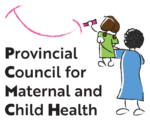Why Health Equity is Important
Social determinants of health, and how they overlap (also known as intersections), affect the health of individuals, groups and communities in many different ways. Health inequity often impacts people from racial and ethnic minority groups; however, people are socially disadvantaged for many reasons aside from race and ethnicity. For example, this may be based on […]
Why Health Equity is Important Read More »
